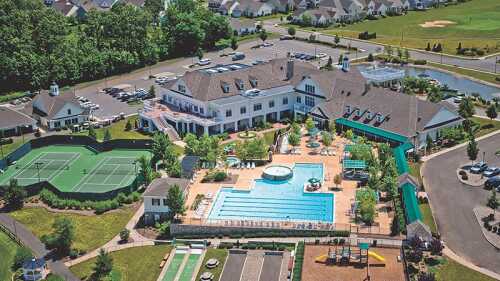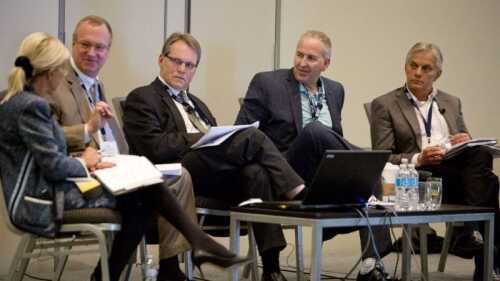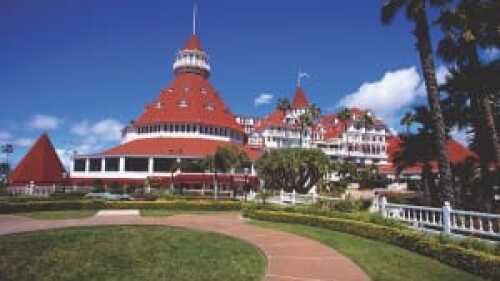Only 300 miles from Los Angeles, the resort community of Mammoth Lakes, California, is home to Mammoth Mountain Resort, the third-most-visited ski area (2.8 million people annually) in the United States and the gateway to the eastern Sierra Nevada mountain range.
In 2006, an investment group filed suit against the town of Mammoth Lakes for breach of contract under a development agreement. In 2008, a jury trial awarded the group $30 million plus legal fees, exhausting the appeal process. The interest clock continued running and the judgment swelled to $42 million. After numerous attempts to settle with the plaintiff, the community of only 8,200 people, 2,200 buildable acres, and a general fund of $16.5 million filed for Chapter 9 bankruptcy on July 3, 2012. Then add the drought of the 2011-2012 ski season—one of the worst in the mountain’s history—the closing of Mammoth’s sister peak known as June Mountain, and a depressed real estate market and you have a snowballing of events that became a catastrophic avalanche.
On September 22, 2012, the developer agreed to a settlement of $23 million. Community leaders and stakeholders convened and created a plan to increase year-round visitation, accelerate investment, and rebuild the developer confidence necessary to revitalize this Los Angeles–area playground—a plan intended to bring the town back from the brink.
In mid-October, on behalf of the town of Mammoth Lakes, four of the community’s leaders presented the Mammoth case history to attendees at the 2012 ULI Fall Meeting in Denver. The foursome consisted of Rick Wood, the town’s mayor pro tem; Matthew Lehman, the town’s current mayor; Chuck Lande, a southern California developer with business and personal ties to Mammoth Lakes; and Rusty Gregory, the CEO of the Mammoth Mountain Ski Area (MMSA), which is the town’s largest employer. Robert Holmes, a longtime member of ULI, chaired the presentation to a packed audience.
The following are the five cornerstones to the community’s comeback strategy. They may provide insights—especially in terms of community-to-developer relations—for other towns and cities around the country that also face financial challenges.
CORNERSTONE ONE: We now share one story
There had never been a unified vision or a master plan for the own of Mammoth Lakes. Nor did the town and the ski area have a combined marketing strategy they could use to attract regional, national, and global visitors. As a result, many still think of Mammoth as being just a ski town—a winter destination—when in fact warm-weather visitors, drawn to the area’s many lakes, wilderness areas, spectacular peaks, and plunging 1,500-foot (457 meter) waterfalls, now outnumber winter travelers.
Since their appearance at ULI’s Fall Meeting, town and mountain are close to finalizing a highly detailed future story that will guide the planning and development of Mammoth through 2020. It is a strategy that not only positions Mammoth as L.A.’s mountain playground, but also encompasses nearby Yosemite National Park (4 million visitors annually) so that L.A., the mountain resort, and the park become a single-destination triangle for visitors from across America and around the world. If you want to receive a copy of that informative story when it is released on July 4, 2013, go to mammothturnaround.com.
CORNERSTONE TWO: We also have a realistic implementation plan
In addition to having a shared future story, the town has a parallel implementation strategy—one that combines numerous small but important incremental changes with several major concepts like a significant development known as Base Camp that could prove to be transformative. The implementation strategy is focused on prioritizing initiatives, identifying resources (financial and manpower), and removing obstacles. Full implementation will occur between now and 2020 to bring to life the vision of Mammoth Lakes as one of North America’s natural wonders. The town, in collaboration with the mountain, already has a team of solutions-oriented people working on implementation to ensure that there are both the will and the means to turn the vision into reality.
CORNERSTONE THREE: We have become more developer-friendly
For decades, Mammoth Lakes had a contentious general plan. The residents were not happy with it nor were the environmentalists. And neither the pro-growth nor the anti-growth factions supported it. The current mayor, Matthew Lehman, describes the impasse this way: “For the last 40 years, we have had no clear policy, no process, and no mechanisms. So we decided to blow up the previous general plan and begin rebuilding it from scratch.”
By August 2007, just as the global economy was collapsing, the town finally had an approved general plan that reflected what people care about and plans that would support sustainable growth. During the downturn, through 2012, the town took further steps to ensure that developers felt welcome. Lehman explains, “To promote sustainable growth, we reduced the number of touch-points with development applicants from 25 to four and began to treat applicants both as important clients and as partners in the turnaround.”
A developer brought the town to its knees. Now, sustainable, thoughtful development and outside investment are the keys to a successful turnaround, and the whole town knows it.
CORNERSTONE FOUR: Our marketing budget not only remains intact, we have found ways to increase it
Mammoth Lakes Tourism plays a very important role at this stage of the turnaround of Mammoth Lakes. To more effectively manage the way the destination is being marketed, Mammoth separated its marketing function from government efforts by way of a destination marketing organization (DMO), now called Mammoth Lakes Tourism (MLT). This quasi-public entity is more efficient and more attuned to market conditions and to the imaginative use of social media. It is one of the reasons 2012 was the most successful summer season in Mammoth’s history. As Rusty Gregory, CEO of Mammoth Mountain Ski Area, points out, “Thanks to the implementation of the new TBID [Tourism Business Improvement District] program, destination marketing will have annual funding of $6 million to work with, regardless of cutbacks the town must consider as part of its turnaround strategy. And we have other factors on our side. The southern California market is rebounding, we’ve had near-perfect snow conditions this season, and experiential travel is on the rise. So the town’s businesses, including the ski mountain, have a number of reasons to feel confident. That, plus ruggedly beautiful, back-to-nature destinations like Mammoth are becoming increasingly attractive to people seeking progressive, adventurous, and healthy places to live—communities like ours that are serious about environmental stewardship and maintaining a quality of life.”
CORNERSTONE FIVE: We are building on our strengths
Rick Wood, Mammoth’s mayor pro tem, ended the ULI Fall Meeting presentation this way:
“We’re optimistic. We have irreplaceable natural assets, including access to the great outdoors and more than 300 days of sun a year. The New York Times called our resort town ‘innovative, funky, and fun-loving.’ Today, we have a community that better understands and is far more supportive of steady, versus feast or famine, sustainable growth. The lawsuit served as a wake-up call. Today, we are back from the brink. We welcome those, including investors, developers, residents of coastal southern California, and global travelers, who want to become part of the specialness of Mammoth.”
OTHER IMPLEMENTATION INITIATIVES
- Zoning code update
- Completion of neighborhood district plans
- Parking districts throughout the town
- Reduction of impact fees
- A comprehensive plan for signage and wayfinding
- Buildout of new facilities including a $2 million high-altitude training track and field plus bike paths connecting the town to the Lakes Basin
- Increased flights from one to seven per day (30,000 passengers annually)
- A Tourism Business Improvement District program to ensure that the destination will have the funding it needs to tell the destination’s unique story to a global audience and to establish and maintain an innovative guest service program
Robert Holmes (THG, LLC, and ULI council member) worked with Jim Smith (Mammoth Mountain Real Estate and ULI council member) and Paul Smith (Storysmithing) on this article.









